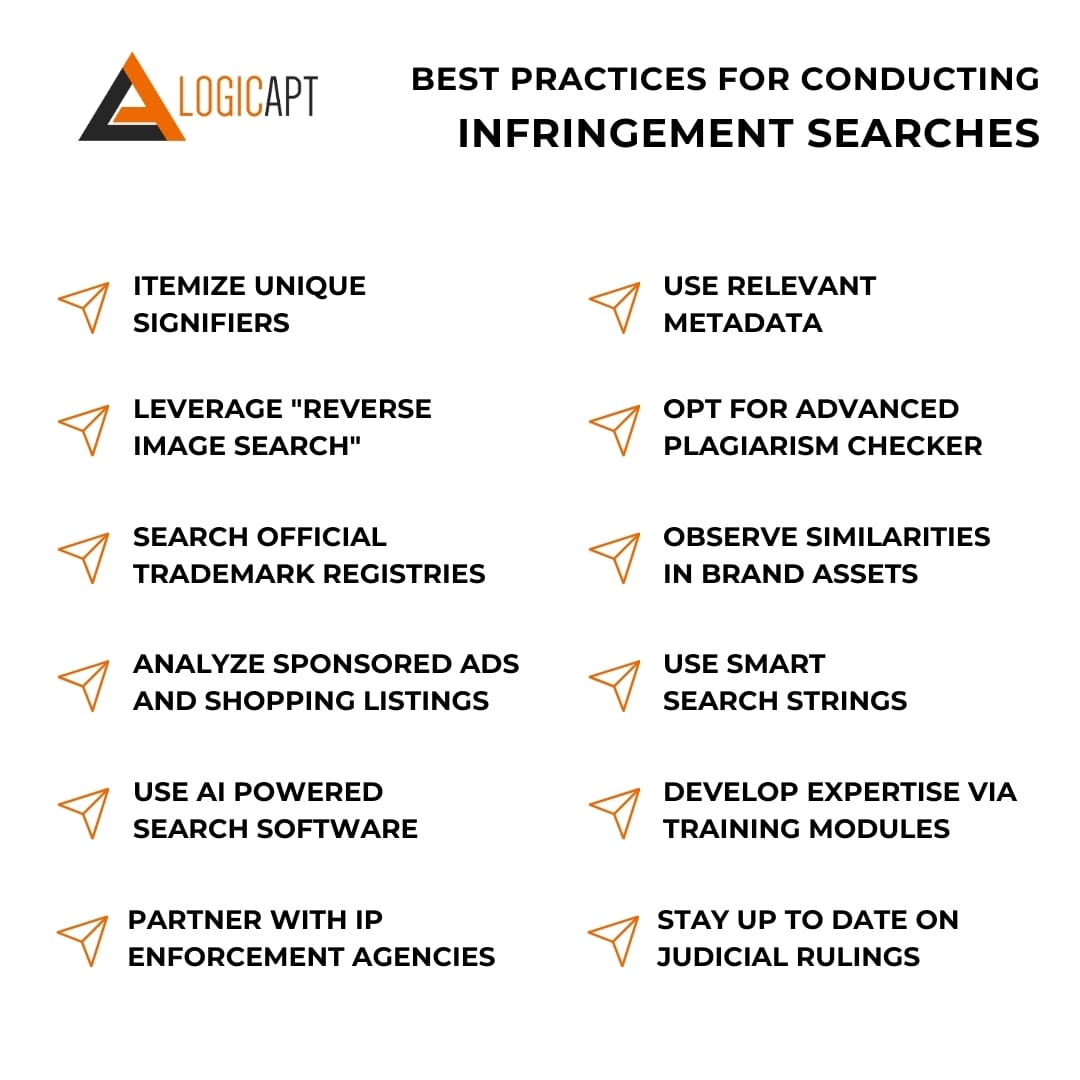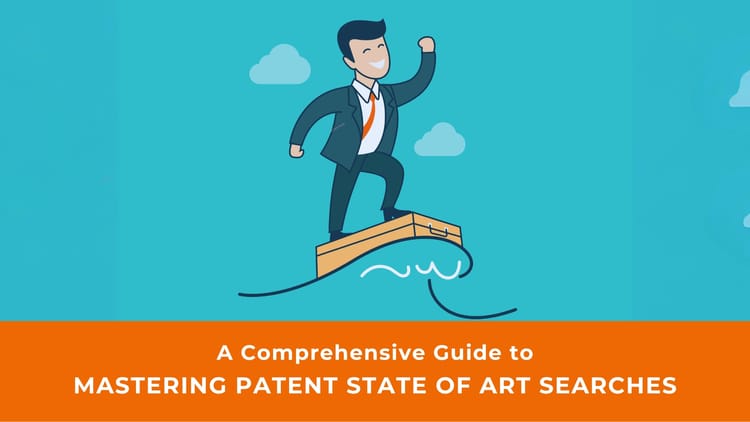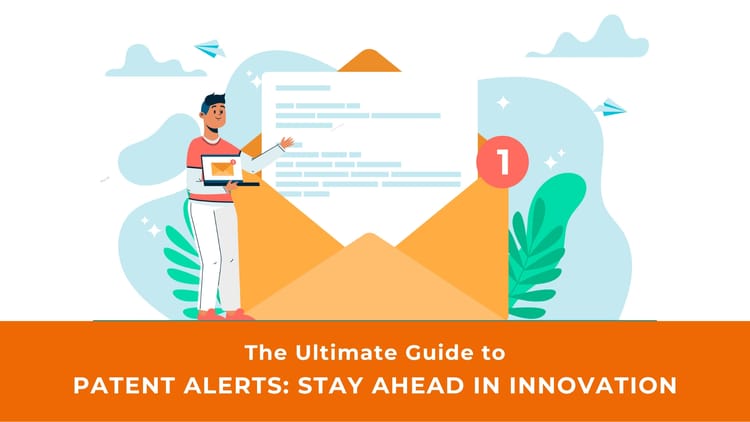The Ultimate Guide to Infringement Searches: Safeguarding Your Intellectual Property

Protecting intellectual property rights has become more critical in today's digital world. With content sharing and distribution happening at lightning speed online, creators and businesses must safeguard their creative and innovative assets. This is where infringement searches come in - specialized searches to identify potential violations of copyrights, trademarks, and patents.
An infringement search, also known as a clearance search, enables rights holders to scan the internet and other databases to check for unauthorized uses of their protected content or brands. From writers and musicians watching out for copyright infringements to businesses ensuring no one is piggybacking on their trademarks to inventors and companies protecting patented technologies - infringement searches empower intellectual property owners to take proactive steps in enforcing their legal rights.
In this digital age where counterfeiting and piracy run rampant, staying on top of infringement issues is key to maintaining exclusivity over one's creations. With intelligent use of available search tools and software, infringement searches make it possible to respond promptly to violations by sending takedown notices or pursuing legal action if warranted. By safeguarding intellectual assets in this manner, creators and enterprises can sustain incentives for continued creativity and innovation.
This guide covers the what, why, and how of various infringement searches, equipping you with the knowledge to monitor and protect your precious IP in the virtual world. Learn about the legal basis, processes, best practices, and more when leveraging infringement searches to enforce your rights.
Understanding Infringement Searches
As the name suggests, an infringement search is conducted to identify unauthorized uses of one's intellectual property rights online or in the marketplace. Its significance stems from enabling intellectual property (IP) owners to actively track and tackle violations of their legally protected creations and assets.
There are three main buckets of infringement searches corresponding to the major domains of IP:
Copyright Infringement Searches:
These searches help spot incidents of copyright violation, like unauthorized reproduction, distribution, or public display of creative works protected under copyright law. Writers, musicians, filmmakers, and other creators leverage such searches by using keywords, images, and other metadata of their work to scan for cases of plagiarism or piracy across the internet.
Trademark Infringement Searches:
These specialized searches assist trademark owners in finding illegitimate usages of their brand names, logos, or other assets with trademark protection. Businesses conduct such clearance searches before finalizing brand names to avoid conflicts. Trademark searches enable global tracking of infringements across online retail, social media, and other digital platforms.
Patent Infringement Searches:
By allowing patent owners - inventors, companies, etc - to search for potential cases of their patented inventions or technologies being used without license or permission, these searches enable tracking violations of patent rights. Patent infringement searches employ access to patent databases, academic publications, and product data to identify illegitimate exploitation for commercial gains.
With content now being indexed and available through search engines, they could even unwittingly avoid copyright infringement or trademark violation by their search results. So, it becomes crucial to leverage customized infringement search practices to have greater control and visibility into how IP assets fare across mediums like the World Wide Web.
The quest to clamp down on IP 'theft' starts with effective infringement searching!
The Legal Framework of Infringement Searches

Infringement searches are anchored in the legal protections granted to intellectual property assets like creative works, brands, and inventions. The exclusive rights encoded in copyright, trademark, and patent laws form the basis for determining what constitutes infringement in each context.
Copyright law grants creators of original works - like books, music, and films - exclusive rights over reproduction, distribution, public display, and adaptation of the protected work—any unauthorized usage of these exclusive rights amounts to copyright infringement. Copyright searches help spot potential textual plagiarism, media piracy, and unauthorized sharing that infringes the creator's rights.
Trademark law grants brands exclusive rights over commercial use of protected brand names, logos, slogans, and other assets associated with brand identity. Unauthorized usage that causes customer confusion violates these trademark rights. Trademark searches can identify other businesses illegally exploiting popular brand names online to freeride on their goodwill.
Patent law establishes the inventor's rights to commercial exclusivity over inventive technologies and products. Any entities utilizing patented inventions without permission deprive inventors of legal protection, besides impacting investment incentives. Patent searches screen databases, publications, and product data to detect unauthorized and potentially illegal usage of patented intellectual property.
By identifying potential violations early, comprehensive infringement searches allow IP owners to resolve issues amicably via takedown notices or pursue litigation well in time to prevent major damages. Essentially, they offer a proactive shield against IP theft in today's complex digital world.
Copyright Infringement Searches
Copyright infringement searches aim to detect unauthorized usage of creative works protected under copyright law. The digital shift has exponentially increased content creation and piracy - highlighting the value of such searches.
The process involves using keywords, images, videos, and metadata associated with the original protected work to scan the web and other databases. Reverse image search tools like Google Images, TinEye, and Pixsy leverage image recognition algorithms to track instances of an image being displayed without permission across blogs, e-commerce sites, and social media. Besides confirming ownership, reverse image search helps identify modified versions that may infringe derivative rights.
Specialized software simplifies large-scale searching for copyright violations. Offerings like Copypants, Copyscape, and Plagiarism Detect enable users to crawl multiple platforms, identify reproductions, and share or display protected text, images, or videos without authorization. Some tools also create an online content repository against which checks can be run continually or periodically through user accounts.
Search engines play a pivotal role in surfacing infringing content. But they also respond to copyright removal notices by pulling infringing search results to comply with laws like the DMCA in the United States. Each search engine has guidelines for rights holders to report infringing listings, which, once verified, lead to the delisting of violating pages temporarily or permanently - curbing the visibility of pirated creative works. So, monitoring search results for infringement and leveraging search engines' takedown frameworks is vital for sustained enforcement.
Trademark Infringement Searches
Trademark infringement searches enable businesses to identify unauthorized or conflicting uses of their brand assets, like names, logos, slogans, packaging designs, etc., which are protected legally through trademark registration.
Such searches typically use relevant keywords, images, company names, and other brand signifiers across domains like web search, e-retailers, social media, and app stores. Search parameters can be narrowed down geographically depending on markets of interest. Any conflicting trademarks or confusingly similar brand usage would signal potential infringement requiring further investigation.
Search engine scans are particularly important to assess infringement risks online. Tools like Google Search Console and Google Analytics help track queries, websites, and ads potentially violating trademark rights or misrepresenting brands. A common concern is that Google search trademark infringement remains persistent despite policy safeguards adopted by Google. From large brands worrying about counterfeiting to small businesses struggling with fake reviews and impersonation - trademark violations on search platforms undermine brand integrity substantially.
When search results display sites illegally appropriating brand value using protected names, logos, or taglines without authorization, legal recourse can be sought under trademark law provisions. IP owners can contact search engines like Google to exercise their rights and curb infringement by specific sites or sellers. Resolutions typically involve removing infringing results, banning violators from ad networks, and disabling illegitimate accounts.
Continuous trademark surveillance through infringement searches provides the earliest alerts on misuse, helping brands curb damages and maintain integrity in the competitive digital landscape. For businesses built around branding, such searches are a worthwhile investment.
Patent Infringement Searches
Patent infringement searches enable patent owners to identify potential violations of their patented inventions and technologies. By searching through product listings, technical specifications, academic publications, patents, and other disclosures, unlicensed usages can be spotted for further investigation.
The process involves leveraging intelligent search techniques to thoroughly scan public databases and even dark sources to trace resemblances or matches with key aspects of the patented intellectual property. Search parameters derived from patent claims, descriptions, and drawings are used to screen databases like Google Patents, PubMed, IEEE Xplore, etc. Product teardowns and reverse engineering patent landscape analysis also assist the search.
Unlike FTO (Freedom to Operate) searches that assess patent exclusivity given the development of new products, patent infringement searches have a distinct purpose of detecting infringements of patents already legally secured. While FTO searches are preventive to avoid violations during innovation, infringement searches provide grounds for pursuing legal recourse against identified violations by competitors and defaulters.
The methodology also differs. FTO searches take an expansive view spanning third-party patents and extensive technology classifications. Infringement searches apply a narrow approach centered around markers of the patent owner's protected IP assets. The objective is not to gauge overall freedom for product development but to precisely spot unauthorized exploitation of patented inventions and claims.
Leveraging the right search expertise and tools is vital for patent owners to track infringement effectively, even by obscure companies across geographies. Patent enforcement hinges on high-quality evidence gathering through infringement searches before pursuing legal options.
Utilizing Technology in Infringement Searches
Advanced software tools and mobile apps are revolutionizing infringement searches - introducing automation, intelligence, and real-time tracking.
Applications like Reversee, Copypants, and Trademarkia crawl websites, social media pages, and other public databases to identify potential copyright, trademarked, or patented intellectual property violations. Users input titles, images, text extracts, or brand signifiers associated with their protected assets. The apps then continuously comb through target domains, generating similarity reports and alerts for potential review.
Integrated image recognition and plagiarism detection algorithms in these apps help accurately spot unauthorized usage more efficiently than manual checking. Features like daily automated website scans, real-time notifications, and highlighting of matched text extracts add convenience. Some apps allow users to maintain a centralized IP asset library and document infringement evidence seamlessly. AI powers apps to iteratively improve search queries to identify violations across contexts precisely.
Platforms like Clibe.ai further leverage computer vision and machine learning to develop customized models focusing on specific IP violations. Training image classifiers using labels and neural networks enables discovering even altered or partial usages of protected trademarks or media. For niche sectors, such tailored AI automation achieves high search accuracy.
As 3D simulations, augmented reality environments, and metaverse spaces evolve with user-generated virtual IP, dedicated apps with object-matching and spatial computing capabilities will become necessary to safeguard IP rights.
While automation handles the heavy lifting, expert human oversight helps correctly interpret matches, minimize false positives, and formalize consequent legal actions. Technology provides the speed and scale, while legal diligence brings contextual prudence.
Best Practices for Conducting Infringement Searches

Conducting comprehensive and accurate infringement searches requires following certain best practices tailored to the IP domain - copyright, trademark, or patent - being investigated.
For copyright searches, begin by itemizing titles, images, videos, and other unique signifiers associated with the protected work. Use relevant keyword metadata like dates, descriptions, and common typos of titles to assemble search queries. Leverage "reverse image search" tools to track unpermitted usage across blogs, e-commerce stores, social media pages, and apps. Opt for advanced plagiarism checker software to identify text duplications spread across thousands of websites and publications with minimal effort.
When dealing with trademarks, search official trademark registries besides search engines to confirm the legitimacy of conflicting filings. For brand assets like logos, carefully observe similarities in color schemes, iconography, taglines, and stylistic depictions while searching. Analyze sponsored ads and shopping listings minutely to catch infringers trying to freeride brand equity.
Employ trained search experts to translate technical patent claims into appropriate search queries for patents. Use smart search strings to screen academic journals, industry publications, and product directories relevant to the patented technology. Refer granted global patents to spotlight geographies at higher risk for infringement exports.
Certain guidelines apply universally across IP classes. Adopting the right tools, like AI-powered infringement search software, automated website crawlers, etc, improves efficiency. Develop search expertise in-house through training modules to achieve transparency. Partner with specialized IP enforcement agencies whenever capacity constraints arise. Follow infringements diligently to build evidence required for legal recourse. Stay up-to-date on judicial precedents that influence each category's identification and prosecution of IP violations.
With the growing menace of counterfeits and piracy online, diligent infringement tracking truly is the best offense and defense for protecting precious IP!
How To Manage Infringement Claims
Even diligent intellectual property owners may find themselves at the receiving end of infringement claims over time. When faced with notices or alerts flagging your content, the first step is to calmly assess validity rather than reacting defensively.
Review the highlighted text extracts, images, or videos in case of copyright infringement flags to evaluate if substantial similarity exists. Consider whether fair use provisions, like short quotes, parody, or transformative usages, may apply. Use the various identifiers in a digital copyright infringement notice, like complaint ID, notice number, timestamp, reporting person details, etc., to access filed complaint specifics if available through web searches. If the IP violation appears unintentional with oversight on valid, fair usage clauses, immediately resolve by pulling down content.
For contested trademark infringement claims, thoroughly compare products, domain names, brand descriptors, and other properties. Assess if sufficient differentiation exists for relevant consumer segments between your brand and the contended mark based on visual identity, phonetic resonance, underlying associations, etc. This determines the next steps around potential rebranding, domain reassignment, or settlement negotiations. Again, quick conciliation is preferable if violations emerge as probable.
In patent disputes, differentiate between primary and subsidiary claims of the contested patent. Consult tech experts to determine archival instances of usage or dependent claims that may impact the actual charge. Similarly, examine if fair use exemptions regarding experimental, testing, or research work with the patented technology may apply. Litigation may be unavoidable if patent infractions surface tangibly.
The priority should be searching for a truthful resolution, not denial alone. Companies like Google provide standardized procedures for submitting counter-notices when disputes emerge. Seek legal counsel specialized in IP matters for guidance. Maintaining compliance helps retain credibility when asserting your infringement grievances in the future.
With diligence and transparency, even alleged violations can be handled smoothly to safeguard interests.
Conclusion
With technologies expanding the reach and impact of creative works, brands, and innovations exponentially, infringement searches offer a vital shield against misuse in the Wild West, which the digital frontier still is in many ways—automated tools bridge gaps in the scale, accuracy, and traceability of violations. However, informed human supervision is integral to sound interpretation and lawful response.
As this guide has illustrated, continuously tracking relevant domains using defined signatures of intellectual property is pivotal to sniffing out violations before they spiral. For amateur creators and enterprise-scale businesses, regularly conducting these searches gives the gift of early action - be it amicable takedowns or litigation-backed clampdowns wherever reasonable settlement fails. Even alleged infringements are better managed from an informed position through access to file claims and user data that search tools provide.
In essence, leveraging search expertise, technology, and legal diligence in harmony enables sustaining incentives for creativity, branding efforts, and inventiveness to flourish. Guarding these interlinked pillars that infringement searches secure is key to pushing innovation further for the common good. We encourage you to stay proactive in responsibly exercising rights and resolving disputes as leaders rather than passive beneficiaries alone. Only by participating more in the ecosystems we seek to enrich can we realize a future where intellectual industriousness and integrity thrive in tandem.



